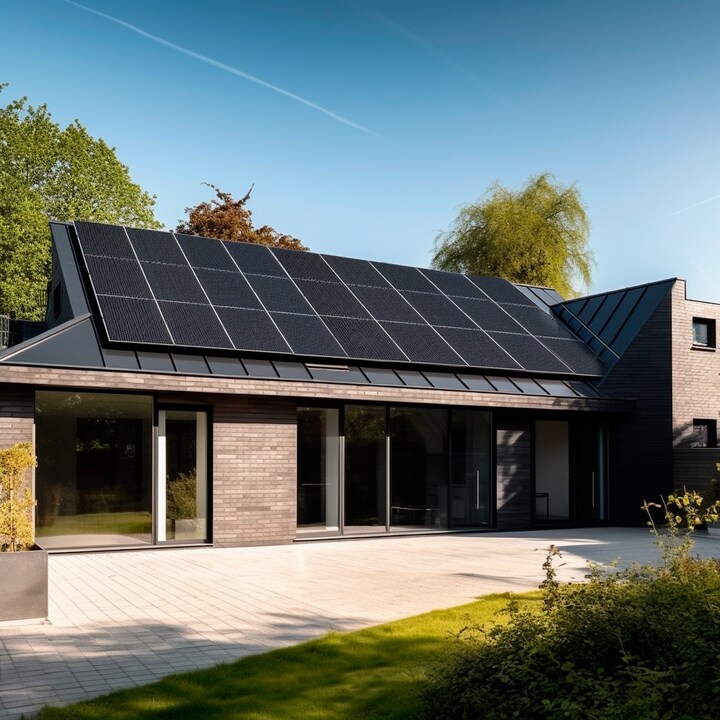Solar panels come in various colours and designs to suit different preferences and needs. Two common colours for solar panels are blue and black. Understanding the differences between blue and black solar panels can help you make an informed decision when choosing the right solar panels for your home or to include in your range of solar panel solutions for your customers. In this article we’ll discuss the reasons behind the colour differences, the types of solar cells associated with each colour, and the advantages and disadvantages of each.

Blue solar panels get their colour largely due to the anti-reflective coating applied to the panel’s surface. This coating, typically made of silicon nitride or titanium dioxide, helps reduce light reflection and increase light absorption, thereby improving the panel’s overall efficiency. On the other hand, black solar panels have an additional layer of black backing behind the solar cells, giving them a darker appearance. This is often combined with black frames to create a sleek, uniform look.
In addition, the colour of a solar panel is closely related to the type of solar cell it uses. Blue solar panels typically use polycrystalline solar cells, while black solar panels use monocrystalline solar cells.
Polycrystalline solar cells (blue panels): These cells are made from multiple silicon crystals, resulting in a distinctive blue hue. Polycrystalline cells are generally more costly than monocrystalline cells due to a simpler and more cost-effective manufacturing process.
Monocrystalline solar cells (black panels): These cells are made from a single crystal of silicon, giving them a more uniform appearance and a darker colour. Monocrystalline cells are often more efficient than polycrystalline cells, but they come with a higher price tag.
Advantages
Disadvantages
They are less efficient compared to monocrystalline panels and have a less aesthetically pleasing appearance, which is a very important decision making argument for lots of customers.
Advantages
Disadvantages
They generally have a higher cost and a slightly larger environmental impact due to a more energy-intensive manufacturing process.
Choosing between blue and black solar panels ultimately depends on your priorities, budget, and visual preferences. While black monocrystalline panels offer higher efficiency and a more attractive appearance, blue polycrystalline panels provide a more cost-effective option with relatively good performance. Understanding the differences between these two types of panels can help you make the best decision for your solar energy system.
In our product range, you will find high-quality full black solar panels. Both the ELAT-FB-GG-430 and ELAT-FB-SG-430 modules are efficient solar panels with a sleek design, ideal for residential roofs.